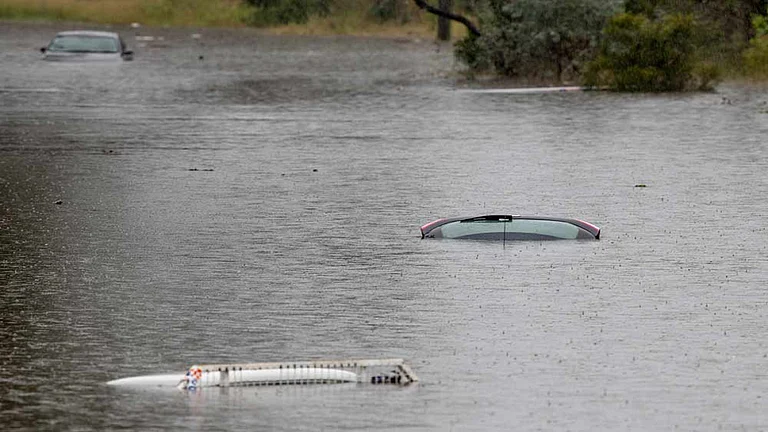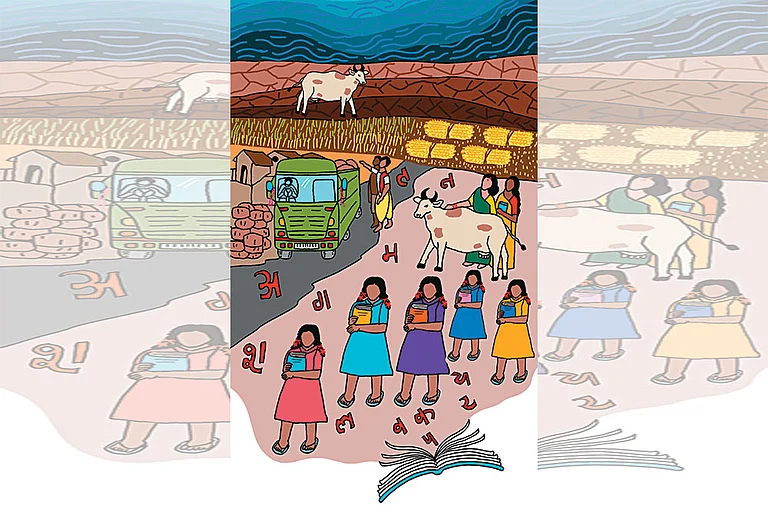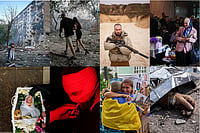The death toll from devastating rain-induced floods and landslides across Nepal has reached nearly 200, with at least 30 people still missing, according to police reports. Incessant rainfall that began last Friday has triggered widespread destruction, leaving the Himalayan nation grappling with one of the most severe natural disasters in recent years.
As of Monday, 192 people have been confirmed dead due to continuous rainfall, floods, and landslides, according to officials from the Nepal Police. An additional 94 people have been injured, while 30 remain unaccounted for. The government has prioritized search, rescue, and relief operations, according to Home Ministry Spokesperson Rishiram Tiwari. Security agencies across the country have been mobilized for these efforts, and over 4,500 individuals have been rescued from disaster-affected areas. Food, medical aid, and other essential relief materials are being provided to those in need.
While many of the injured are receiving free medical treatment, thousands of people remain stranded due to severe damage to roads and highways. The Kathmandu Post reported that all routes leading to the capital city, Kathmandu, are blocked, leaving travelers trapped in various locations. The Bagmati River, which flows through the capital, surged above danger levels following torrential rainfall that lashed large parts of eastern and central Nepal over the weekend.
History of Bihar Floods
2019 Bihar Foods

In 2019, Bihar faced severe floods, with three waves hitting the state over a span of four months, causing significant damage to both life and property in many areas. The rising water levels in rivers like the Mahananda, Bagmati, Kamla Balan, Adhwara, Burhi Gandak, Kosi, Sone, Punpun, and Gandak exacerbated the flooding situation. Following reports of heavy rainfall and flooding in October 2019, the Disaster Support Cell (DSC) at NRSC responded promptly, working at a war footing. They activated the international charter and Sentinel Asia to access multi-mission satellite data for effective flood monitoring and response.
2017 Bihar Floods

In 2017, Bihar experienced severe flooding due to heavy rainfall in early June, followed by continuous downpours in August, which caused water levels in the Ganga and its major tributaries to rise. The floods affected over 25 districts in the state. The first wave of flooding occurred in July 2017, impacting five districts as the Ganga and its tributaries overflowed. The second wave, which began in August, was triggered by heavy rains in Nepal’s Terai region, as well as parts of Uttar Pradesh and Bihar. The floods persisted until September, with the Ganga flowing above danger levels in districts like Madhubani, Khagaria, Bhagalpur, and Darbhanga.
Current Flood Situation in Nepal and Bihar

Nepal has closed schools for three days following devastating floods and landslides caused by two days of heavy rainfall, which have resulted in the deaths of 151 people, with 56 still missing, officials reported on Sunday. The torrential rains brought daily life to a halt in many parts of the country, including the Kathmandu Valley, where 37 deaths were recorded. This region, home to 4 million people and the nation’s capital, has seen widespread disruption.
Meanwhile, across the border in Bihar, heavy rains continued for a second day, raising fears of floods in northern Bihar and neighboring Nepal.
Flood situation in several parts of Bihar worsened on Monday as embankments of Kosi river in Darbhanga district and Bagmati river in Sitamarhi were breached, officials said.
The Kosi river was in spate and breached its embankment near Kartarpur block, inundating Kirtarpur and Ghanshyampur villages in Darbhanga late on Sunday, while seepage was reported in the embankment of Bagmati river in Runni Saidpur block in Sitamarhi district, they said. "The flood situation has worsened with fresh embankment breaches but it is under control. There is nothing to panic," an official said.
The embankment of the Bagmati River at Madhkaul village in Sitamarhi and the Gandak river's embankment in West Champaran were damaged due to excessive water pressure, resulting in inundation in the Valmiki Tiger Reserve, another official said. "Water flowing above the embankments was reported from Valmikinagar and Kiratpur in Darbhanga. But now the water level in several rivers started receding. No casualty has been reported so far in Bihar due to the flood", the minister said.
Considering the gravity of the flood situation in north Bihar, six more teams of the National Disaster Management Authority (NDRF) from Varanasi in Uttar Pradesh and Ranchi in Jharkhand are being deployed, he said.
Flood Management Measures
Began with the Five Year Plans in 1954, focusing on structural and non-structural methods based on regional needs.
Structural Measures
Embankments, Floodwalls, Levees: Physical barriers to prevent flooding.
Dams and Reservoirs: Control water flow and store excess water.
Natural Detention Basins: Use natural areas to hold excess floodwater.
Channel Improvement: Enhance water flow in rivers to reduce flooding.
Non-Structural Measures
Floodplain Zoning: Manage land use to minimize damage.
Flood Proofing: Modify structures to withstand floods.
Flood Forecasting and Warning: Early alerts for potential flooding.
Reservoir Regulation: Control reservoir water levels to mitigate floods.
Relief and Rescue Operations: Provide aid during and after floods.
Radio Kosi: The Unheard Cries of Flood-Affected People
In the book Radio Kosi, Pushyamitr, a journalist and author, vividly recounts the long-suppressed voices of those living along the banks of the Kosi River—voices that have been overlooked and ignored by the state for decades. His book is not just the story of one village or town but a collective outcry from a region trapped in a relentless cycle of political neglect. Through his words, Pushyamitr reflects on how promises made during elections are rarely kept, and how those in power continue to manipulate the hopes of the people. The breaking point came on August 18, 2008, when the Kosi River, confined by embankments for over fifty years, finally broke free. As the river carved out a new path—destroying fields, homes, and entire communities—it became a powerful symbol of the government's failure to manage its fury.

“रेडियो कोसी किसी एक गांव एक कस्बे की कहानी नहीं है बल्कि उन तमाम लोगों की अनसुनी पुकार और गुहार है जिसे सरकार कई वर्षों से दबाती आई है। बहलावा देकर वोट लेना और वोट ले कर बहलावा देना, यह एक चक्र है यानी साइकिल है, जिसे शायद एक सार्वभौमिक चक्र कहा जा सकता है। 18 अगस्त, 2008। पचास से अधिक सालों से तटबन्धों के बीच कैद कोसी नदी ने खुद को इस कैद से पूरी तरह आजाद कर लिया और बिलकुल नये इलाके में बहने लगी। पूरी की पूरी 1 लाख 71 हजार क्यूसेक जल-प्रवाह वाली इस नदी ने सिल्ट से भर चुके अपने पुराने रास्ते और 16 फीट ऊँचे तटबन्ध को तोड़कर नया रास्ता बना लिया - यह सोचे बगैर कि उस राह में खेत है या मकान है या कस्बा है या गाँव। यह सोचना उसका काम था भी नहीं, यह तो सरकारों, नीति-नियंताओं और उन्हें लागू करने और उनकी देखभाल करनेवाले अभियंताओं का काम था। मगर उन लोगों ने पिंजरे में बन्द बाघिन को वैसी सुविधाएँ नहीं दीं जिससे उसका मन पिंजरे में लगा रहे (वैसे किसका मन पिंजरे में लगता है, आजादी किसको प्यारी नहीं होती), तो उस बाघिन का बाहर निकल आना तो इसी बात पर निर्भर था कि वह कब पिंजरे को तोड़ पाती है।”
The devastating floods in Nepal and Bihar highlight the urgent need for improved flood management and preparedness in the region. While structural measures like embankments, dams, and levees help control floodwaters, they often fall short in extreme weather events, as seen with breaches in Bihar's embankments. Non-structural measures such as floodplain zoning, flood forecasting, and early warnings are essential to protect vulnerable communities. The voices of those affected, as captured in Pushyamitr's Radio Kosi, remind us of the long-standing neglect faced by flood-prone areas. It is crucial that governments prioritize sustainable flood management, listen to the grievances of affected communities, and ensure effective action to mitigate future disasters.



























